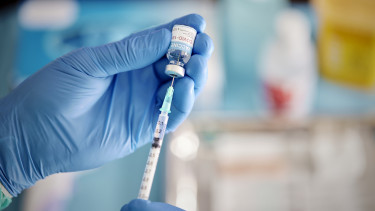Where are Hungary's COVID-19 statistics for fourth doses?

Key facts
Before going into details, here are a couple of key facts about how Hungary fares in terms of vaccinations in the coronavirus pandemic:
- more than 3.35 million Hungarians (34.5%) of the population have not received a single dose of any COVID-19 vaccine'
- vaccination helps avoid infection and effectively prevents severe disease and death;
- two doses provide seriously diminished effectiveness against infection by Omicron;
- about 3.74 million Hungarians (38.5% of the population) are vaccinated with three doses of COVID-19 vaccines;
- nearly 5.68 million Hungarians got their 2nd jab more than four months ago;
- on the wild assumption that all of the 3rd doses were administered to members of the above group, there are still about 1.94 million people in that group that have not received their third jab;
- 890,500 Hungarians received their 3rd dose more than four months ago and 461,000 more than five months ago.
Are fourth doses included in the tally of third doses?
Fourth doses have also been made available in Hungary. According to the relevant regulation, the vaccinating physician may decide to administer the 4th dose (2nd booster) of a COVID-19 vaccine if requested by a person over 18 years of age who has already received three doses and four months have elapsed since the 3rd jab.
Koronavirus.gov.hu, the official government website releasing information about the coronavirus pandemic, disclosed data on 4th shots for the first time on Monday, saying 124,000 fourth doses of COVID-19 vaccines have been administered.
Unfortunately, no more details have been shared, i.e. we do not know how many of these were requested on the basis of an existing medical condition (see box) or by people that simply did not think three doses would provide them enough immunity against SARS-CoV-2 (at least) four months after their third jab .
Originally, authorities said a fourth shot (second booster dose) would be available
-- for the elderly,
-- the chronically ill,
-- people on immunosuppressive treatment and transplant recipients, and
-- in the disease groups listed by the Ministry of Human Resources (Emmi).
This and accounts by various sources of fourth jab administrations made a couple of us thinking. Why aren’t there daily reports on fourth doses? Is it possible that the statistics for third shots include fourth doses, as well? Note that this is merely a hypothesis and cannot be backed by any official data. Yet, the charts below make you wonder… Is it possible that while 3rd doses are easily accessible on any day of the week, a large number of people prefer these three days every weekend (Thursday, Friday, Saturday) to get their jab? That's another possible explanation for the recurring spikes. Again, another hypothesis...
It is possible that the ‘baseline’ of third doses is what we see on normal days and the fourth shots are reflected by the spikes during ‘vaccination campaign’ days. 124,000 is a suspiciously round figure, and recall that only such round numbers were published on 3rd shots until 22 November 2021, which was the first day of a vaccination campaign where 1st, 2nd, and 3rd doses were available without prior registration and appointment-booking.
If you scroll all the way down, you’ll find a brief analysis of the monthy vaccination trends (starting in October 2021) for 1st, 2nd and 3rd shots, along with the relevant charts.
But before that, here’s what we’ve seen in terms of 3rd doses so far this year. The spikes are the ‘vaccination campaign’ days, on which the above hypothesis is based. Even if fourth doses are not included in these figures, the trend is stagnating at best, which was preceded by a sharply descending trend in December, a relatively strong ascending trend in November and a flattish upward trend in October (see left-hand charts in the ‘triplets’ below).

The chart below clearly shows how the spikes on vaccination campaign days starting in 2022 stand out from the downward trend observed in December.

Monthly trends
The pattern in the administration of 3rd and 1st doses has been almost identical so far in 2022, although the trend at 1st jabs is descending while it is stagnating at 3rd doses. As regards 2nd doses, the last two ‘roller-coasters’ may be similar, but their extent is very different. The right-hand chart shows the number of first doses administered, which - due to its almost identical pattern with that of 3rd shots - kind of contradicts the theory of fourth shots being included in the tally of third doses. (Click to enlarge.)

As for December 2021, only the 3rd doses stand out, their downward trend is much steeper, while 1st and 2nd doses moved on a similar path.

The curves for 1st, 2nd and 3rd doses are practically identical in November.

The patterns are the same for all three in October, but the trend is descending at 2nd doses, and ascending at 1st and 3rd doses.

As regards the Oct-Dec period, we see spikes at 2nd doses in mid- and end-December. We can observe the same also at 1st doses, but these humps remain well below the 22 Nov peak, unlike at 2nd doses.

Cover photo: Getty Images






